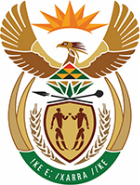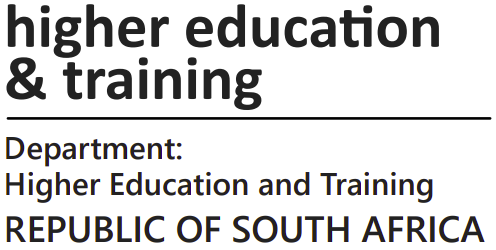Find research > Output by person as author
Skills transfer in municipalities in South Africa >
This study focused on skills transfer in local government with specific reference to South Africa. The terms of reference for the study are: To develop a concept document on skills transfer in the workplace focusing on capacity-building programmes, c...
LMIP dictionary on skills supply and demand >
The aim of the study was to compile and develop, in collaboration with the DHET, a dictionary to serve the following purposes: To enhance shared language use by labour market intelligence (LMI) users; To provide a trusted reference point for clarifyi...
The changing role of public research institutes in South Africa: A report to the NRF >
The research reported on here will contribute one complementary component to a multifaceted research agenda focused on problematising the developmental role of universities and public research institutes in the national system of innovation in South...
This paper examines the formation and operation of this research-policy nexus in South Africa and the means by which evidence-based policymaking has been conceived and utilised in this space. The paper is divided into five sections. Section 1 discuss...
What is the current state of research on PSET? >
This presentation defines the PSET sector as an 'inverted pyramid' that also reflects the scale and focus of the formal published research literature. Additionally, it asks the following key questions about the state of research on PSET: Who conducts...
Barriers and bottlenecks: Understanding youth transitions in the post-compulsory phase of school >
This presentation addresses the following topics: Throughput rate of learners to Grade 12 is of concern - Increasingly staggered progression as learners move through school; High and growing level of unemployment amongst youth population - 60% of une...
Indicators and data to support skills planning in South Africa >
The purpose of this presentation is to: Provide a background to the LMIP work and why DHET/ skills planning needs a set of indicators; Present the framework for determining what indicators will be developed (conceptual approach); Outline the methods...
Outcome 5.1.1: 'A credible institutional mechanism for skills planning' >
This presentation to Minister Nzimande, DHET details: Research completed; why skills planning is needed; what approach to skills planning and labour market intelligence systems is needed; an information framework guiding skills planning; who will be...
Roadmap for the implementation of a skills planning unit >
Within the context of the Skills Planning Unit (SPU), this roadmap addresses the following issues: What are the functions of the SPU? What could be the most suitable location for the SPU? What structures will be required to establish the SPU? What pr...
Skills Planning for Post-School Education and Training >
The presentation provides an overview of the Research-Policy Nexus DHET-HSRC led research consortium. The strategic applied research involved a close relationship between policy makers and research in shaping the skills planning research agenda. It h...
Skills supply and demand for South Africa: LMIP Colloquium presentation >
This presentation looks at the Skills Supply and Demand in South Africa Report. The challenge for government is to estimate and anticipate the education and skills required to support societal development and a productive and inclusive economic growt...
Skills supply and demand in South Africa >
This report provides a holistic understanding of the current supply and demand for skills in South Africa and represents one of the first attempts to analyse how the two interact to inform future skills policy to support an inclusive economic growth...
Smooth, staggered or stopped? Educational transitions in the South African Youth Panel Study >
This report uses the South African Youth Panel Study (SAYPS) - a longitudinal panel study - to follow Grade 9 learners who participated in the Trends in International Mathematics and Science Study (TIMSS) in order to explore the educational transitio...
Smooth, staggered or stopped? Educational transitions in the South African Youth Panel Study >
The South African Youth Panel Study (SAYPS) followed Grade 9 learners who participated in TIMSS 2011 over four consecutive years, in order to explore the educational transitions of young people. The study found that: South African learners follow one...
In order to support the objectives set out in the Department of Higher Education and Training's (DHET) 2013 White Paper for Post-school Education and Training (PSET), it is critical to engage with a strong evidence base of research. To this end, the...
Pathways through university and into the labour market: Tracer study from the Eastern Cape >
This policy brief (from the HSRC's Labour Market Intelligence Partnership) is based on a recent LMIP report that explored the findings of a graduate tracer study conducted in the Eastern Cape. The broader objective of the study was to explore key edu...
This presentation at the International Council on Education for Teaching (ICET) 59th World Assembly 'Challenging Disparities in Education' in Tokushima, Japan addresses the following subject: Schooling inequality, higher education and the labour mark...
This study attempts to link schooling, demographic, socio-economic and academic factors to first-choice degree completion and labour market outcomes. More specifically, this study investigates those factors that are most directly associated with whet...
This study was conducted within the context of the mining industry. The empirical investigation involved 80 apprentices and three lifestyle trainers based at the Goldfields Training Centre in Luipaardsvlei. The aim of the research was to: (i) assess...
South African Social Attitudes Survey (SASAS): An overview >
This presentation provides an overview of the South African Social Attitudes Survey (SASAS). It highlights: history; broad aims; sample design; SASA content; a dynamic tool for policy-makers; core principles for module design; international comparati...
An examination of the vocational education and training reform debate in Southern Africa >
This paper explores the role that vocational education and training (VET) can play in Southern African responses to major socio-economic challenges. It argues that this role will be most pronounced if it is articulated within a broader educational an...
Creating a credible institutional mechanism for skills planning in South Africa (session 2) >
This briefing workshop to the Minister of Higher Education and Training focuses on Emerging trends from the MEMSA skills forecasting model; the need for a SETA Labour Market Survey; Attitudes to work: Social attitudes have a bearing on Labour Market...
The purpose of this report is to assess government's economic-development policies as drivers of demand for skills. The main objective is to generate a broad estimate of the skills demand implications of implementing key development strategies, inclu...
Matching higher education and the labour market >
This presentation asks the following key questions: Why are some graduates unemployed? It questions the objectives of the Eastern Cape Graduate Destination Study on unemployment; details its methods and data and shares its findings before drawing som...
In order to support the objectives set out in the Department of Higher Education and Training's (DHET) 2013 White Paper for Post-school Education and Training (PSET), it is critical to engage with a strong evidence base of research. To this end, the...
Pathways through university and into the labour market: Tracer study from the Eastern Cape >
This policy brief (from the HSRC's Labour Market Intelligence Partnership) is based on a recent LMIP report that explored the findings of a graduate tracer study conducted in the Eastern Cape. The broader objective of the study was to explore key edu...
This presentation at the International Council on Education for Teaching (ICET) 59th World Assembly 'Challenging Disparities in Education' in Tokushima, Japan addresses the following subject: Schooling inequality, higher education and the labour mark...
This presentation focuses on the following topics with regard to the evidence from a graduate tracer study in the Eastern Cape, South Africa on Schooling inequality, higher education and the labour market: the South African context; some stylised fac...
This study attempts to link schooling, demographic, socio-economic and academic factors to first-choice degree completion and labour market outcomes. More specifically, this study investigates those factors that are most directly associated with whet...
International Labour Organisation: Future of Work Initiative. Theme 2: Decent jobs for all >
This paper will examine the long-stated ILO goal of full employment and decent work, and whether under current global, regional, and more specifically, national circumstances, such a goal is achievable in the next 20 years. The concepts of work, empl...
formation and communication technologies (ICTs) are widely understood to be an enabler of economic growth (UNDP 2001a). South Africa's Deputy President, Phumzile Mlambo-Ngcuka, who launched the Accelerated and Shared Growth Initiative (Asgisa), indic...
merSETA report: Impact assessment of learnerships and apprenticeships >
This study was commissioned by the Manufacturing, Engineering and Related Services SETA (MERSETA) with the aim of ascertaining the efficiency and effectiveness of the learnership and apprenticeship systems and to assess their impact on the demand for...
National database sets and research on labour market demand >
This study shows that none of the previous work on skills needs in South Africa can claim to have predicted detailed skills needs in different sectors with great quantitative precision, although it contributed to and informed skills planning in the c...
The main objectives and broad questions of this presentation are: Within the LMIP - paper explores the NIDS data - through recent migration; main research question: are there links between recent migrations of individuals (x) and employment status/la...
This paper explores the current nature of the links among the challenges of rural and urban unemployment and how these possibly lead to new patterns of recent internal migration, using the first two waves of the NIDS (2008 and 2010). In this context,...
Synthesis report: Assessing the impact of learnerships and apprenticeships under NSDSII >
Our study adopted a pathways conceptual approach (Raffe, 2003; Harris et al, 2006), focusing on the trajectories of (young) people in the transition from school to un/employment, various forms of further study, and into the labour market. Central to...
LMIP Policy Roundtable: Presentation on unemployed graduates >
Unemployed graduates are a perennial problem - we read about this matter every year in the newspapers, and everybody has an opinion on the best way to deal with the problem, but there has been very little progress in this regard. Another issue that i...
Beyond the basics: Educating and training out of poverty >
The International Journal of Educational Development exists to debate issues about the relationship between education and development. One of the perennial elements of these debates has focused on identifying the most suitable types of education to e...
This study has begun to quantify the scale of non-compliance in the recreational fishery sector, and most importantly the relationships between non-compliance of the recreational fishers and small-scale fishers. This is the first study of this nature...
Survey of the financial and accounting services sector May 2008 final report >
The overall aim of the sector study was to provide Fasset with an integrated profile of the Financial and Accounting Services Sector, the education and training provision to the sector, and the skills needs and requirements of the sector. The specifi...
The main objective of the project was to scope and consider the feasibility of institutionalising tracer studies relating to WPBL programmes. The report engages with this objective in the following ways: Firstly, it evaluates tracer-type research int...
LMIP learning session 6: Review of the workspace skills plan and the annual training report >
The Ministerial Task Team on SETA Performance, as well as the White Paper on Post-School Education and Training (PSET) expressed concern about the quality of data received by SETAs from employers, and the limited potential for credible analysis of su...
This synthesis report aims to inform strategic thinking in the TVET branch, towards devising a coordinated strategy to promote PPPs across all tiers of the system. We situate the current strategic initiatives to promote partnership in South Africa wi...
Water and wastewater management in South Africa is almost reaching a crisis level and for this reason there is an increasing need for collaboration among different stakeholders. In 2014, the Local Government Sector Education and Training (LGSETA) and...
Water and wastewater management in South Africa is almost reaching a crisis level and for this reason there is an increasing need for collaboration among different stakeholders. In 2014, the Local Government Sector Education and Training (LGSETA) and...
This presentation comments on the findings of the NQF Act Implementation Evaluation.
Three-stream model and envisaged articulation opportunities >
This presentation on the Three-stream model and envisaged articulation opportunities explores: 1. Background and introduction 2. Strategic Direction 3. Three Stream Model 4. Articulation opportunities 5. Responses to the NQF Research 6. Conclusion.



